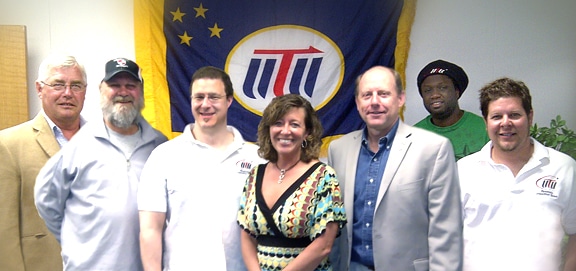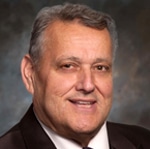
By John Previsich,
SMART Transportation Division President –
Organizing – it is good for you, for our members, for our union and also for America.
Those of us who enjoy the benefits of working as organized labor are acutely aware of the value that our membership in the union provides for us and for our families. Good wages, excellent health care and retirement programs that are the envy of working people everywhere are goals that are strived for by every union negotiator in every contract. The success of unions in achieving these goals is beyond argument. There is no industry where workers who do not belong to a union are better off than those who have chosen to bargain collectively.
Why is organizing good for you, our members and our union? Aside from the obvious benefits of better wages and working conditions, union jobs provide better security, protection from discriminatory employment practices and the opportunity to negotiate as a group for improvements to income and work rules. As successes are achieved on short lines, bus companies and airlines, our membership grows, resulting in a stronger union. But just as importantly, good contracts raise the bar industry-wide. For example, when the railroad industry first started to spin off branch lines after the Staggers Act deregulation of the 1980s, it was not unusual for “mom and pop” operators to come in and pay near minimum wage for seasoned, professional railroad workers. Now, after many years of successful organizing, the short line world is much different, operated to a great extent by large companies who pay a good union wage. This has changed the financial incentives for creating short lines and as a result, the jobs of our members on the larger railroads are more secure than ever before.
Why is organizing good for America? Setting aside the occasional stumble due to recessionary cycles, business has done very well in the last half of the 20th century and the first years of the 21st century. During the industrialization era that followed World War II, American workers shared in that prosperity, creating an economic engine that was second to none. Unionized labor was widespread, workers received a fair share of the profits that they helped to create and as a result, were able to purchase a house or a new car and send their children to college to continue the upward mobility of the middle class.
And then things changed. Over the past few decades, there has been a disturbing trend in the economics of our country. Rules that support unions have been weakened and right-to-work-for-less laws have been enacted in many states. Companies have moved manufacturing offshore, taxes on the wealthy have been reduced and loopholes created that allow Warren Buffet to be taxed at a lesser rate than his secretary. Conglomerates are permitted to park their profits outside of the country, effectively paying no tax at all while sitting on hundreds of billions of dollars that were not shared with their substandard-wage workers overseas. Income that used to be shared with the employees now either sits offshore, goes toward stock buy-backs or is used to pay senior management salaries that are thousands of times greater than that of their workers.
As more and more of the available capital is gathered up by fewer and fewer people at the top, workers are forced to compete for an ever-shrinking piece of the pie. This drives down wages, reduces spending power and contributes to the overall widening of the gap between workers and the wealthy. The current path is unsustainable and its continuance contributes to a downward spiral for our country and its workers.
The benefits of organizing new members are many. The downside of not organizing is substantial. Accordingly, the SMART Transportation Division Board of Directors and the SMART General Executive Council have approved my budget request to expand our already very effective organizing department. We are in the process of doing so and will keep you updated on the outcome of our efforts in the months ahead.


 A column by SMART Transportation Division President John Previsich and AFL-CIO Transportation Trades Department President Edward Wytkind informing lawmakers about the public’s support for Amtrak was published April 16 by the
A column by SMART Transportation Division President John Previsich and AFL-CIO Transportation Trades Department President Edward Wytkind informing lawmakers about the public’s support for Amtrak was published April 16 by the  WASHINGTON – The U.S. Department of Transportation’s Federal Railroad Administration April 9 announced its intention to issue a proposed rule requiring two-person train crews on crude oil trains and establishing minimum crew size standards for most main line freight and passenger rail operations. The FRA also intends to advance a rulemaking on train securement and recommends a rulemaking on the movement of hazardous materials.
WASHINGTON – The U.S. Department of Transportation’s Federal Railroad Administration April 9 announced its intention to issue a proposed rule requiring two-person train crews on crude oil trains and establishing minimum crew size standards for most main line freight and passenger rail operations. The FRA also intends to advance a rulemaking on train securement and recommends a rulemaking on the movement of hazardous materials.



